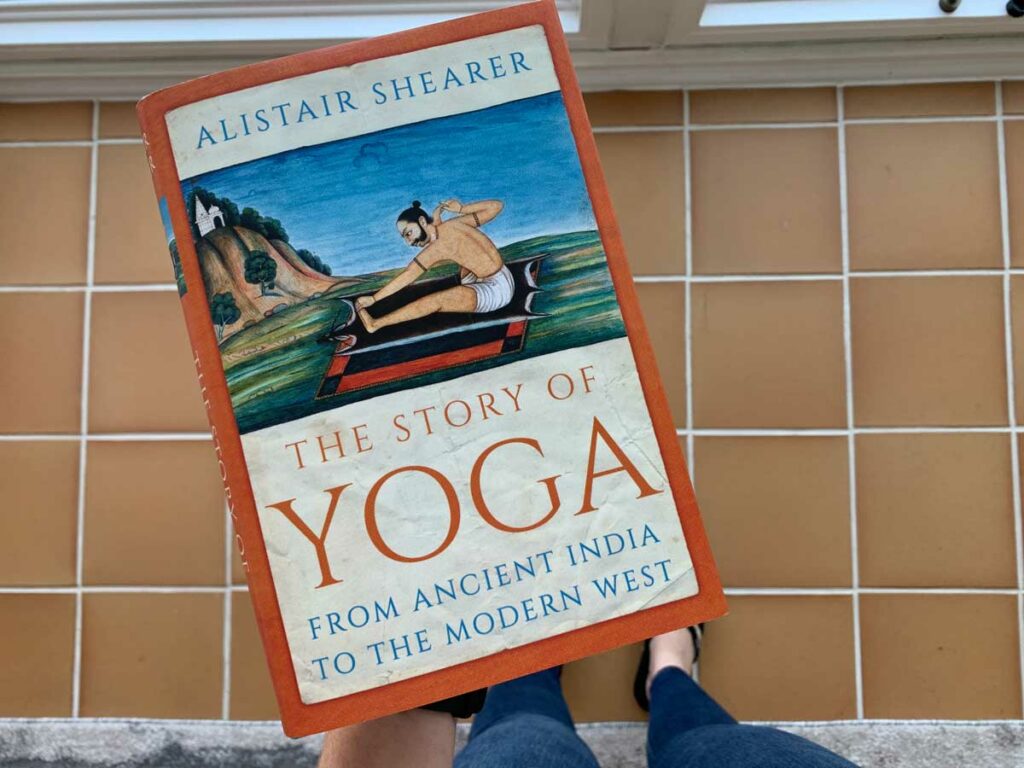
Two years ago, I became obsessed with trying to figure out what yoga really is and where it really came from. Here in Fort Worth, we have studios that are called “yoga” that teach only rigid, set sequences; we have studios that are called “yoga” that teach dance and fluidity, and we have studios that are called “yoga” that teach mind-based practices.
Well, we used to.
Then Covid hit, and now we mostly have the hot, set sequence yoga. That breaks my heart, for real. I lost my two favorite studios because of Covid, and really, because of the changing of our world, if we want to be honest. Covid or not, I’m not sure how one city can support that many studios. If I wasn’t so jaded about the yoga industry, I would open up one of those fluid studios, but I just can’t wrap my mind around that at this point.
Anyway. It got me wondering: what really is yoga? What is it here in North America? What is it in India, a place I’ve never been but heard so much good and bad about? What is it in Europe, and in Peru, and in Australia?
What is the History of Yoga?
I wrote this post about the History of Yoga in North America two years ago. It took a lot of research and devouring books and devouring really old magazines and looking up archives on the internet to get that to a point where I thought it was valid and true enough to publish. That little post took me months to get through, but I thought it was important for me to understand, and for you, too.
This year, in my free time, I’ve been taking a ton of yoga trainings online. Most recently, I’m in a super deep study of women’s health with Tiffany Cruikshank. It’s great, and a beating TBH, so I’m going incredibly slow. Earlier this year, I studied with a few of the most important female yoga teachers on this planet, one of which was Donna Farhi.
Donna held a Q&A at the end of each session, and one woman asked her for more information about her background in yoga. She has an incredibly diverse background; if you’re not aware, look her up. She trained and taught extensively in the set sequence/rigid mindset for decades, and finally realized how awful it was on her body, which caused her to create her own series of slow, thoughtful movements, awakening her spine and leaning mindfully into her areas of pain.
I just can’t say enough good things about her, or her offerings. So anyway, one student asked for more information on the background of yoga – what is Iyengar, who was he, what was the practice, who was Pattabhi Jois, etc., etc. She spoke a bit, and recommended a new book that had just been released called The Story of Yoga.
I’m slightly obsessed with reading and learning, and bought the book that day.
These are the first words of The Story of Yoga:
This is not a “how to” book – there are already more than enough of those – but a “how come?” one. How come a time-honoured road to enlightenment has turned into a $25 billion-a-year wellness industry? What were the historical twists and social turns on the winding path that led from the caves and forests of ancient India to the gyms, studios, and village halls of the modern West? What have the original teachings of the sages lost, or perhaps gained, while being transplanted onto foreign soil? And how is it that there are so many very different forms of yoga, which between them seem to include everything from muscles to mindfulness, stress-busting to spiritual liberation? This book is part an attempt to define what this thing called “yoga” really is.
Damn, right? How can you teach yoga, or practice yoga, and read those words, and not want to devour the rest of the book? I couldn’t at least. It took me about 4 months, but I finished it last week. It’s a thick, history-filled book. It’s the best book I’ve ever read on what yoga really is.
Yoga teachers, buy it.
What really is Yoga?
What I learned is: yes, we know a lot about yoga. At the same time, we know very little. Yoga is movement, and it’s also sitting. Much of it was created by really flexible men. Much of it was then enhanced by muscle-building men. Much of it has blown up due to the stars who have endorsed it and the firm asses of rich, white women.
That’s the truth.
That’s yoga.
The good, the bad, it’s somewhere in the middle.
I still choose to focus on the good. I no longer spend an hour+ a day on my mat, I no longer spend 20 minutes a day in meditation. I do still move for a few minutes every morning, and sit for a few minutes every morning. I still spend quite a bit of time in trainings, and in reading, and in trying to understand what it is – where it is going – and how we can stop torturing its name so it can continue to help ease pain and suffering for so many.
That’s the point of it, for me. The healing and the strengthening, especially for seniors and those with chronic pain, I can get behind. The firm asses and the yoga pants and the hippy dippy palo santo, no thanks. I’m somewhere in the middle. And maybe that’s where yoga is, too.
Love, Jen
